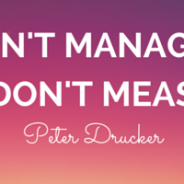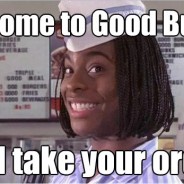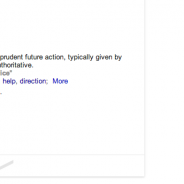New Years Resolution: 2017
2016 was an absolute whirlwind of a year for me. Over the past 12 months, I have … Began flight lessons at San Carlos, CA airport in the Bay Area (SQL!) I got married to my wife, Jennifer Travelled internationally to Bali and London Left San Francisco for a new home New Orleans, driving the 1,600 or so miles from San Francisco to New Orleans in the sweltering heat of July Arrived in New Orleans to find our air conditioning was broken (doh!) Led five idea-stage businesses through a 12-week intensive accelerator (thanks Idea Village!) Adjusted to leading my company 2 time zones ahead and 1,500 miles away from my closest colleague Went into a partnership with 2 other real estate investors to invest in a residential real estate deal here in New Orleans …and I’m sure there was quite a bit more that I’m forgetting! With that in mind, I wanted to publicly state my new years resolution. Do less, but focus more on what I do Just the act of *reading* my bullet-point recap of 2016 makes my heart speed up a little bit. Guess that’s the introvert in me 😉 Here in 2017, I really want to reduce the amount of projects/moving parts that I’m involved in and put more energy into the projects that remain on my plate. My 2017 new years resolution: Engage in fewer things, focus more time/energy on the things I do. — Mike Krass (@mikekrass) January 3, 2017 This realization hit me when I read a random Twitter users take on productivity. Instead of posting a story about ‘how to be insanely productive and destroy huge to-do lists’, I distinctly recall her update said “Instead of hacking my productivity, I want to reduce the number of things I have to do and focus only on the truly important ones” This idea really hit home for me. I’m taking her advice and sprinting with it into 2017. So … what do I want to focus on? I’d love to finish flight school and get my private pilots license before our annual family beach trip to Florida at the end of May. I want to bring 10 non-profit clients onto the MKG client roster, specifically to share the awesome opportunities of Google’s Grant program for non profits that gives away $120,000 – $480,000 in FREE resources to non profits every year but yet so few NPO’s actually apply and manage those resources (ahhhhhhhhh!!!!) by the end of the year. I want our real estate project to get off the ground and get all 4 houses we bought/fixed up rented by the end of March. Last but not least, I want to continue embedding myself in the New Orleans tech and startup scene. I want to find a BIG IDEA to work on outside of MKG, so bring me the best you have...
read moreCommunity Feeds the Entrepreneurial Fire
For those who weren’t aware… I moved to New Orleans two months ago! Since the big move from San Francisco I’ve been running my business here, joined the Idea Village as an Entrepreneur-in-Residence for their Fall Digital Media accelerator and been looped into a Co-Curator role of the local TechStar Startup Digest. Phew! Over the past 2+ months I’ve met with leaders from professional organizations such as Idea Village, Propeller, 4.0 Schools as well as quite a few startup founders themselves to get a read on the local entrepreneurship landscape here in New Orleans. What is interesting is that from the largest professional organization down to the smallest startup (yahoo sole founders!), everybody has indirectly touched on a common theme: “How is my business/product/service going to make a positive change in the New Orleans community?” Notice how I haven’t heard the lines “…and this is how I’m going to change the world” or “…my product will create an entirely new market to service” Instead, Entrepreneurs (defined as startup founders, intrepreneurs, extrapreneurs, etc etc) here in New Orleans are actively trying to make their own neighbors life better from day #1 and solving local problems first, as voiced by the community. Back in San Francisco, all I ever heard was “my startup my startup my startup” – unless I missed some big group kumbaya meeting that was held each week, it seems that entrepreneurs in that market simply don’t give a s*** about the community itself. Granted I’ve only lived in New Orleans for about 70 days, but in my 5 years living in San Francisco I never heard this kind of talk. Let me share a few examples of civic engagement that I’ve run across. A colleague at the Idea Village who was a varsity swimmer in college leads a youth swim league based out of Tulane University’s Riley Athletic center – for free. He loves swimming and wants to help mentor and coach the next generation of swimmers. Last week I met the founder of Nola Brewing Company and he promptly said “Here’s my phone number call me literally anytime of the day or night.” There was no expectation. It’s unlikely I’ll ever buy something from him directly (indirectly, I love an ice cold Nola Blonde on a hot summer day) but he wanted me to know that as a newbie to the area, I had a friend in him. Pardon my french (hey, we ARE in Louisiana …) but people here frankly just GIVE A SHIT about the local community in a way that I’ve never seen in a “traditional” startup powerhouse city like San Francisco. And that’s really refreshing. Allow me to take the hint from my new neighbors: I’m only an email away from meeting new people and helping in any way that I can. Hit up my contact page and get in...
read moreMy Thoughts on Scrum
Our team has a new obsession. Scrum. Originally a working set of processes to deliver better quality software on time, Scrum has now expanded to professional organizations, schools and governments. You can read all about it here. More important, you can see how it works in the graphic below. Scrum has it’s own language. You’ll hear terms like… Product backlog. Sprint. Scrum master. Product owner. …and the list goes on 🙂 Instead of trying to explain every element of Scrum to you (just buy the book) I wanted to talk about one very specific element of Scrum. Introduction to Velocity Velocity is the total effort a team is capable of in a sprint. In plain English: You can calculate a numeric value of how productive your organization was over a set period of time (known as a Sprint) based on ‘Story Points’ (again, read the book). The idea is that your velocity should increase significantly each Sprint. Jeff Sutherland, one of the creators of Scrum, estimates that a good Scrum implementation should increase a companies productivity by three or four times! What is really neat is that you can actually chart your velocity to see how your productivity increases as a group. Which I’ve done below for our team. We increased productivity by +32% in 2 weeks This entire conversation reminds me of the saying: “You can’t manage what you don’t measure.” We had no idea how much our team could accomplish until we began measuring productivity in more than the quantity of tasks completed. Again: “You can’t manage what you don’t measure.” I’m not asking you to become a kool-aid sipping disciple of Scrum. I’m just encouraging you to find a way to measure your team’s productivity. And then try and improve on that unit of measure day-after-day, month-after-month and year-after-year. Make my day: Share this story on social media...
read moreWhy Customer Satisfaction is Priority #1 for Growth
It’s funny how perception changes as your business grows up. In our first year of business, we were obsessed with making our biggest (and only) customer happy. They represented more than 90% of our revenue and we would do whatever it took to make them successful. Need your floors cleaned? We got you covered. Did the barista froth your latte enough on the way in to work? Have no fear we have one of those fancy IKEA frothier for ya to use. Looking back on that first year, this obsession was both our best and worst policy. Why was it the worst policy? Well, that’s pretty simple: It could have put us out of business. A single email that said “we’re going to use a different marketing services vendor” would have done the trick. In fact, a year down the road that client did send an email to that effect. The email said that the entire division was being laid off. Adios, client! Yikes! Talk about having too many eggs in 1 basket 🙂 You said this could be good though … So how could this ever be a good policy? Much less the best policy? Well there are four reasons I can think of off the top of my head: 1) Trench Buddies Success becomes mandatory for you. Just like it is for the client. It puts the same amount of praise and pressure on you as the it does on the client. It puts you in the trenches with your client. And guess what that builds… 2) Trust Quickest way to earn your customer’s trust? Put your own neck on the line alongside them. You can’t buy that kind of relationship. You have to earn it. The customer and your team will spill blood in the name of winning that battle and war. Trust me on that one. 3) Pen Pals (but more serious) Making your customer happy (can) require near constant communication. There’s never a day or two that goes by without … You communicating what is happening Why it’s happening What you’re doing to fix it or boost it 4) No Surprises Avoid getting caught with your pants down. If you constantly communicate with your customer in the trenches, you should never get a surprise phone call from your customer that goes something like “We’re going to take this business to another vendor…” Case in point: Just this week we took a piece of business away from an established competitor in our space. The client had hired a new VP of marketing (someone we used to work with) and she was evaluating their vendors. When this particular vendor failed to impress her, she asked us to bid on the business. They had never been in the trenches with her. We had. They had never had more than two phone calls with her. We had hundreds. Within 30 days, the competing vendor was gone and we had the business. In Summary … Treat every client you have as if they were your most important. Too tough to do? That’s a red flag that you’re stretching your people too thin. Or you don’t have the resources to provide killer service to your customers. Or that you have too many customers. Think I’m even halfway correct? Then share this story on social media....
read moreLeadership is About Letting Go
Recently a friend of mine was having a problem at work. She was receiving a promotion to a new job within the company, but her current boss was not allowing her to start the new job for two months. Without going into the details, there’s a lot of politics involved in this decision. That’s not important to speak about right now. What is important to speak about is leadership. In my opinion, my friends current boss was showing her true colors. Holding my friend hostage in her current job was showing that she was a poor leader. The current boss knew that this is an unbelievable opportunity. That my friend was a perfect person for the new job. But the current boss refused to let my friend leave in less than eight weeks. She demanded that my friend rehire her own position. Meanwhile, my friends new boss was chomping at the bit for her to get started. As I have matured over the years, one of the big things that I have learned about leadership is that you have to let your people go. It can be as easy as… Giving instructions and sending them off trusting the job will get done Telling a worn down team member to take a day (or week!) off work to clear their head. Letting the teammate go, knowing their heart isn’t in this job any more. In my opinion, great leaders know when to let go and to what degree. Sometimes leadership is about letting go. Did this story add some value to your day? If so, I’d be mighty obliged if hit the ‘share’ buttons on the lefthand side of your screen. Also, sign up for my mailing list to receive updates every time I publish. Receive Email Updates Every Time I...
read moreTell me what I need and hurry up already
Every week I field anywhere between five and 15 sales calls. Folks from all over the country (and sometimes the world!) that are trying to sell me all kinds of things. Off the top of my head, here are the phone calls I have received this week: Search engine marketing software Business intelligence software Marketing automation Telemarketing services and software Fielding all these calls is a distraction; I’m usually in the middle of client work, helping to manage our growing team or reading The Oatmeal when I need a moment to recharge my batteries. These phone calls interrupt all the things I mentioned above. So I finally took the time to put together a cold-call script for the recipient of the call that helps move the conversation along. It goes a little something like this. Step 1: “What are you selling me?” Control the conversation from the get-go: it’s your time, don’t allow them to bumble around with it. If I smell a long answer coming to this question or they don’t acknowledge that they are selling me something, I cut them off and ask one of the following: “Hold on there. Tell me in one sentence or less what you are selling me.” “Hold it right there. Yes or No; did you call me today to sell me something?” I call this my “Tell me what I need and hurry up with it” response — it puts me in control of the conversation and focuses on closing out the conversation. Step 2: “Why do I need what you are selling?” This is an invitation to take between 10 and 30 seconds to deliver your “elevator pitch”: the few sentences that describe your product, the pain it addresses and the benefits my company will see from investing in it. Step 3: “Great! Let’s take this conversation to email.” At no point will I ever allow a cold-call to take more than 60 seconds out of my day; it simply isn’t time I have to give to a stranger trying to open my wallet and pluck out the contents. The reason I immediately push to email for professional conversations is because: The Value of a Written Conversation: I want all the facts recorded in front of me through our first few conversations. An email thread will do that for me. Can I Shake This Guy/Gal?: Oftentimes, a sales call without a positive ending (“I’ll take it!” or “let’s do a demo”) will get categorized by the salesman as a bad opportunity in Salesforce; they simply don’t want to deal with you anymore. That’s great for me — I’m actively trying to see if I can get you to go away! I’m Busy: Contrary to popular belief, I do not sit around on Facebook all day waiting for sales people to call me (shocking!). So thinking that your conversation is more important than whatever you interrupted me doing is definitely not true. An early sales mentor in my life taught me this one liner: If they have something fantastic to sell you, then they’ll keep following up. Over. And over. And over. It may take weeks. It may take months. But eventually my cognitive recognition of your email handle, phone number and sales pitch will take over and I will actually talk to...
read moreThoughts on Career Change From a Guy Who’s Never Changed Careers in His Life
I received an interesting email this morning … A contact I made a few years back was interested in making a career change. The victim: His current advertising career. The opportunity: A job that allowed him to work in product or project management. … he asked me for some advice … “Do you have any advice on how to make a career change and/or anyone in those types of fields/roles I could talk to as well?” It took me a few minutes as I thought on his question: What advice did I have (if any)? After I compiled my thoughts and sent an email response, he thanked me for my time and mentioned the tips were super helpful and I should share them with others. … which brings us to to this point … I’ve copy/pasted my three tips from that email. In no particular order, they are: Find Similarities & Connect the Dots Discover what type of company you want to work for “Become a PM with a focus on [insert job function here]” Tip #1: Find Similarities & Connect the Dots For example, my girlfriend is in revenue management at hotel companies. But honestly, once you know pricing and revenue strategy and get some experience, in that field you could work at a hotel company, restaurant chain, retail company (Old Navy, for example), etc etc the list goes on! Basically, find the foundational elements of what you do now that could be transferred to a new industry, field or career path. Tip #2: Discover what type of company you want to work for It’s really important to discover the industry or company (by name) that you want to work for. This leads into #3 and is critical because you want to really love what they are doing before you approach them with an offer to “make them skinnier”, “make you happier”, “make you more money”, etc by bringing you on as a FTE. Tip #3: “Become a PM with a focus on advertising” I have a friend in Los Angeles who used to work at a large ad agency in town. He didn’t necessarily love being at an agency, but he did love the advertising elements of his job. Ipso facto, he marketed himself to large companies who needed global advertising experience (as a PM) and got hired at a Fortune 50 legacy software company to run their North America advertising division. What does this mean? He basically oversees all FTE/contractors/agencies that support advertising for HP. In english: he’s a boss-man director who does very little work but gets to lead advertising processes, strategy, needs and performance reviews by leveraging his ad agency experience. In Closing: What did I miss? There are surely other tips that I failed to mention in this story. Drop them into the comments section and I’ll make sure to pass them along to my...
read moreHow to Hang On to Your Most Talented, Rock Star Employees
There is tons of research available to help companies craft employment opportunities that attract and retain the best-and-brightest in their field. This article will not be adding to the clutter. Instead, I wanted to share a personal experience about managing our talented (and growing) team here at MKG Media Group. My Number 1 Rule to Retaining Rock Star Employees: Specific Recognition A recent Society for Human Resource survey found that a major source of employee happiness comes from being recognized for all their hard work from the management team. Additionally, a story from Graham Winfrey on Inc.com found that one of the top reasons rockstar employees are annoyed with their company is from a lack of recognition for their hard work. So why aren’t companies recognizing their team members more often? I won’t even begin to attempt to make a blanket statement for all companies across the globe, but I can share a few of my own personal struggles in recognizing the rockstars here at MKG: Eventually Superman becomes … Just a man: What I mean by this is that after you get used to your team doing amazing things, it almost makes it tough to recognize how awesome they are on a regular basis. It becomes the norm! Unfortunately, this means your brain only recognizes when a mistake is made and a discussion is needed, which is not a great practice for leaders to get into. Busy = Head Down: Sometimes I get so busy that I mentally recognize something amazing, yet don’t have the wherewithal to congratulate the team member Specificity and Recency is King: Expanding on my second issue, if I don’t give the feedback immediately and as specific as possible, it’s less likely that I will pass along the praise. Okay, okay: I’ll give my rockstars some love. But how do I avoid doing it the wrong way? There’s a great Forbes article that breaks this down into a few problems with type of feedback: Wrong Recognition: This is defined as recognizing team members in the wrong way. For example, praising shy team members who would prefer a private ‘good job for …’ by sending an all-office email and standing them up at the quarterly company meeting in the middle of their peers. Non-Specific Praise: While giving a ‘way to go!’ comment is nice, leaders need to be specific in the praise that they deliver. ‘Great job drawing up [specific example] for [example client]…’ is way better than ‘good job’. Recognition is a “Check the Box” Exercise: It’s almost become a boring routine for leaders — wake up, check email, say good job to ‘check off the box’ on your daily to-do list. Two examples from the team here at MKG: Our team is filled with creative marketers who never cease to amaze me. Every day I literally catch myself say ‘Wow! Now why didn’t I think of that…’ — it’s amazing! While we don’t have too many processes here, there are a few ways that we recognize our people for their accomplishments. Recognition Practice #1: Praise During Friday Stand Up Meetings Every single day the team stands up (physically) and we discuss what we are going to accomplish that day. Don’t mistake this for a long meeting: we literally speed through everyone’s day and anything that requires more than a 10 second conversation is scheduled as a...
read moreEstablishing Values to Guide Personal and Business Decisions
Let me tell y’all a little story … This week we met with two really exciting companies who found our work on the web and reached out to see if our agency could amplify their marketing efforts. One company was self-funded and is extremely profitable, boasting great margins and a really keen eye for where they wanted to expand within their market. The second company is a HOT startup based in Mountain View that has raised nearly 9-figures worth of venture funding and expanded into more than a dozen geographies in the past three years (talk about hockey stick growth!) … both of these companies told me the same thing … As we began our introductory conversations, both of the companies told me the same thing about our teams initial assessment of their products: “Wow, you’ve actually tried our service. Nobody else we’ve talked to yet has done that yet.” This statement absolutely blew me away: how could you pitch a business partnership without ever trying the prospects product or service? By simply signing up and trying their service, we got a first-hand view of the user experience. Not only that, taking a moment to sign up put us ahead of our competitors because we’ve actually used their product and came into the meeting speaking their language. … which made me really happy about one of our companies values … Our company has values; they help guide our decision making processes for both big and small decisions. The value that came into play this week was this: Never ask somebody to do something you haven’t tried yourself. It’s a value we’ve practiced for the past three years and read about constantly from entrepreneurs such as Neil Patel, and it’s served us well over the past week. Which leads me to ask … … what value(s) do you have? How have they served you well...
read moreNegotiating Past a Speed Bump in a Business Deal
This negotiating advice was given to me many moons ago (too many to count …) The first, and still to this day best, sales advice I ever heard was: “There are only 2 good answers in sales: ‘yes’ or ‘no’. ‘Maybe’ is a waste of your time.” If you’ve never heard this expression before, you may be experiencing the reaction I first had when I heard it: “What are you talking about? Maybe isn’t a no … so that’s good right?” Wrong. After working my tail off for the past three years starting MKG Media Group, I’ve learned how to break down the three answers you may receive: Yes is pretty self-explanatory; as in “yes, I’d like to give you a pile of money or valuables to perform XYZ…” No is a little bit more nuanced. No can be “no, not right now”, “not ever”, “not until you prove that you are better than your competitor at doing xyz” …. You get the picture. The list goes on. No is really just a great time for you to say “Thank you for your time, what was it that threw you off if it’s not too much to ask?” Maybe is a whole other beast; one that I have gotten to know (too) well over the past three years. If I were to sum up my top two ‘maybe’ experiences they would probably go something like: “Maybe if you reworked the numbers and then re-presented to my entire team a few more times” is the same as “we sort of like your ideas and are going to actively rip your creative thinking and execute this ourselves or literally hand it off to our existing supplier/vendor/partner/what-have-you” “Maybe you should talk to our colleagues in the other department” is the same as “we’re going to try and get them to buy this with their budget but we will totally use the product/service when they do” Why is maybe a huge problem? Because ‘maybe’ doesn’t get you close to a yes or a no; that is, a definitive answer. ‘Maybe’ results in you doing a bunch of extra work to try and get to a no or a yes. ‘Maybe’ often means you didn’t do a thorough enough job during the preparation (stage 1) and exchanging of information (stage 2) stages of the sales process (see chart below) Last but not least, maybe is often used as a negotiation tactic: “Maybe we can move forward, pending you reducing price by x% …” or “…delivering the service faster” or (my favorite) “billing us on accrual for services rendered on a net 60 payment cycle” (in English: you have to do all the work and then wait 60 days to actually receive a dime). How do you get past ‘maybe’? By no means should you follow these ideas to a T — I’m just a normal guy like yourself and no rainmaker like Rick Robarge (or insert other stud sales guy/gal’s name here), but here are a few tricks that I’ve picked up over the years. Contract term length Payment schedule Deadlines & Ultimatums Contract Length I’ve experienced prospective clients asking our company to do more work for proposed costs/less money quite a few times. Oftentimes, these are clients who say things like “I’d love you to prove yourselves; if you can bring...
read more











